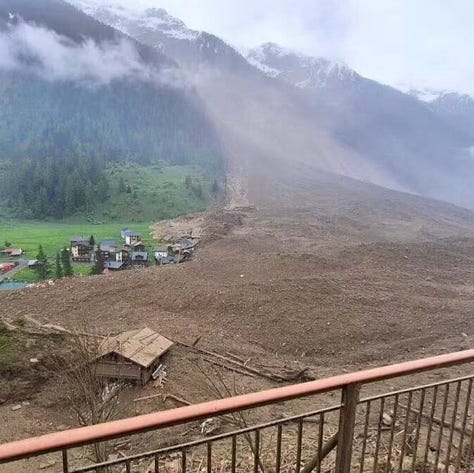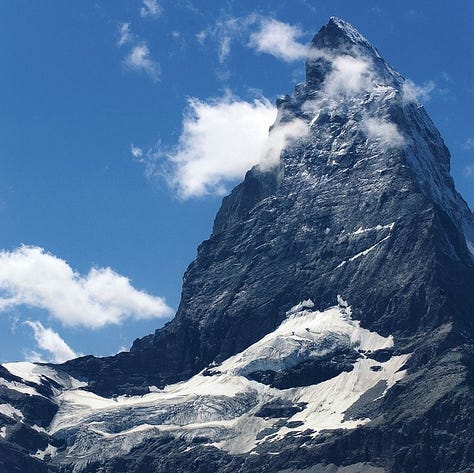An alarming message from the crumbling Swiss Alps
Will thawing permafrost awaken the Swiss government from its climate slumber?



Today, a massive avalanche of rock and ice destroyed much of Blatten, a beautiful village in Switzerland’s secluded Loetschen Valley whose inhabitants were evacuated a few days ago. Last summer, massive chunks of rock broke off the Matterhorn and Eiger, Switzerland’s most iconic mountains, within days. And in 2017, a large mudslide destroyed parts of Bondo in the Bregaglia Valley, killing eight people in the process.
Landslides are a recurrent feature in the Swiss Alps, and it is too early to assess the exact reasons for the catastrophic rockslide which destroyed Blatten today. Yet we know that as average temperatures rise, thawing permafrost makes such incidents both more frequent and more threatening.
Permafrost is ground material that remains frozen throughout the year. It underlies an estimated 6,000 square kilometers of land in the Alps, an area three times bigger than all Alpine glaciers taken together. This includes some 2,000 square kilometers of permafrost in Switzerland (or about 5% of the Swiss land area), mostly slopes located at an altitude of 2500 meters and higher. As permafrost thaws and freezes again, the ground can lose its stability and trigger landslides through a variety of factors.
Blatten and Bondo are small towns in remote valleys. Yet thawing permafrost also puts major population centers and tourist destinations such as St. Moritz, Zermatt, Wengen, Andermatt and Verbier at risk and threatens important Alpine infrastructure such as the Great St. Bernard, Julier and Bernina passes.
Melting permafrost has contributed to rock and mudslide disasters which claimed hundreds of lives in the Kaukasus and the Himalayas. In Switzerland, the toll of such events has so far mainly been emotional and financial. The wall which is supposed to protect Bondo from future landslides has for example just been completed at a cost of more than 50 million Swiss francs (or more than 60 million US dollars).
Yet the erosion and landslides which affected Blatten and Bondo, the Matterhorn and Eiger, are early examples of a trend which will only get worse. Near Mont Blanc, narrow peaks below 3,850 meters above sea level “may lose permafrost entirely” by the end of the 21st century, the IPCC has found.
Today the Swiss government said that the inhabitants of Blatten should be able to stay in their valley. Yet Neue Zürcher Zeitung, the newspaper of the Swiss bourgeoisie, has argued that Swiss society should “give up certain mountain valleys” in response to thawing permafrost, increasing floods and mudslides. “In economic terms we cannot justify keeping these places alive if it becomes more expensive due to the looming climate damages”, adds a representative of Avenir Suisse, the think-tank of the Swiss business sector.
If we allow climate change to continue escalating, certain areas, including Swiss mountain valleys, may indeed become uninhabitable. But this recognition should shock us out of our complacency. No place on Earth will be safe from runaway climate change. If we have to give up our homes and culture to global warming, it is all the more important that we do the utmost possible to stop the crisis from getting worse.
The Swiss government is doing the opposite. With vocal support from the Swiss business lobby it ignored a climate ruling of the European Court of Human Rights, cut the budget for climate action, decided to shift freight transport from railways back to trucks, and relaxed climate restrictions on the automobile industry in recent months. In a sad irony, the Swiss government even decided not to participate in the EU’s Copernicus program, an effort which would allow the comprehensive monitoring of climate risks also in Switzerland. Sacrificing mountain valleys while continuing to fuel climate change is short-sighted and cynical.
Copyright: 20 Minuten (Blatten), Wikimedia commons (Matterhorn), jungfrau.ch (Eiger)



